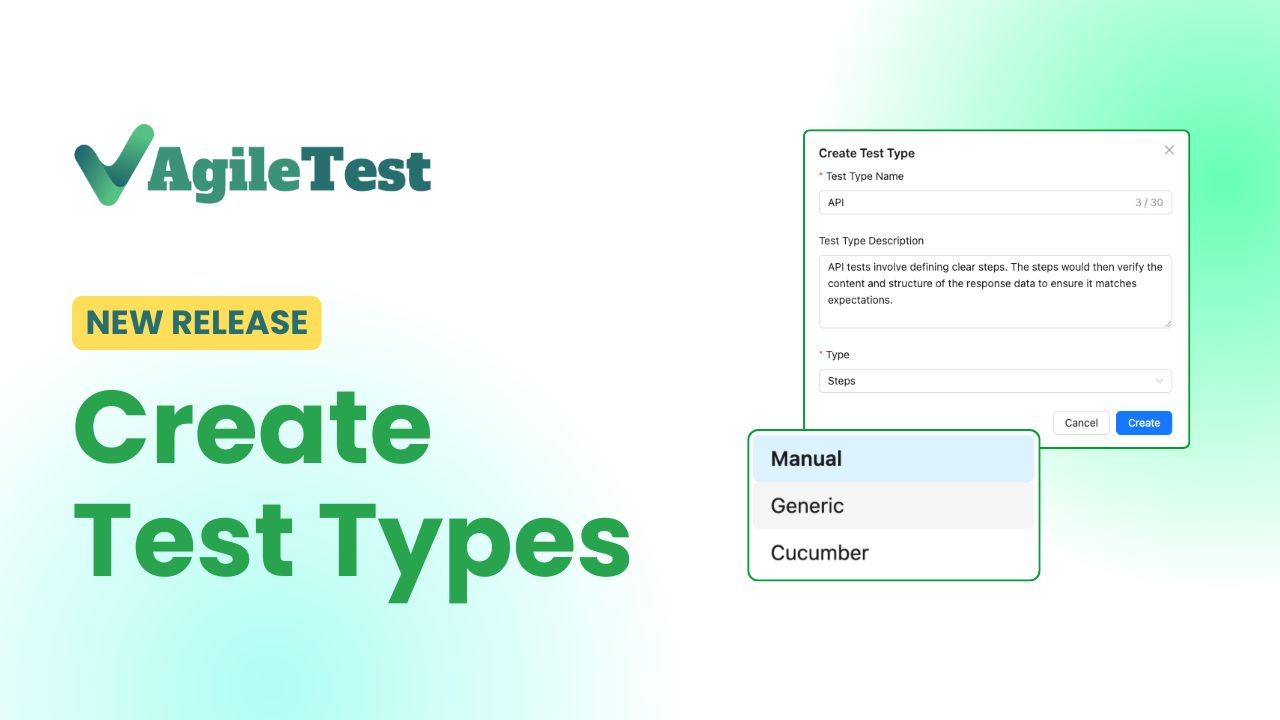It is a fact that software can be tricky. One minute everything’s running fine, and the next, a small bug crashes your app during a live demo. Ouch. That’s where software testing comes in.
Testing isn’t just a step at the end of a project – it’s something we should think about from the very beginning. It’s how we catch issues early, make sure things work the way they should, and save ourselves from awkward bug reports later on.
What is software testing?
Software testing is the process of checking that a software product works as it should and meets the needs of its users. It helps teams find problems early so they can be fixed before the software is released, which saves time, money, and effort.
As Peter Morgan says in Software Testing: An ISTQB-BCS Certified Tester Foundation guide, testing is “the systematic and methodical examination of a work product… to show that it does not fulfil its desired or intended purpose.” In other words, testing looks for things that don’t work as expected.
Two important steps in software testing are:
- Verification – making sure the software is built the right way, following the design and written requirements correctly.
- Validation – making sure the software does what users need and expect it to do in real situations.
Testing is a key part of the Software Development Life Cycle (SDLC), helping teams deliver better, more reliable, and user-friendly software.
Benefits of software testing
Software testing brings several practical benefits to software projects and teams. It helps improve the quality of the product and supports smoother development and delivery.
Here are some key benefits of software testing:
- Detects defects early: Testing helps find problems before they grow into more serious issues, reducing the time and cost needed to fix them later.
- Improves product quality: By checking if the software meets its intended behavior, testing helps make sure the product works as expected and is more stable.
- Supports informed decisions: Testing provides useful information about the software’s current state, helping teams decide when it’s ready to move forward or be released.
- Reduces risk: Well-targeted testing lowers the chance of failures in live environments, especially in areas with high business or technical risks.
- Builds team and customer confidence: When testing is done properly, it gives both the development team and stakeholders more confidence in the product.
Testing adds value throughout the development process by helping to create software that is more dependable, usable, and ready for real-world use.
Types of software testing
Software testing can be grouped into two major types: functional testing and non-functional testing. Each type focuses on different aspects of the software and includes various testing methods to check specific areas.
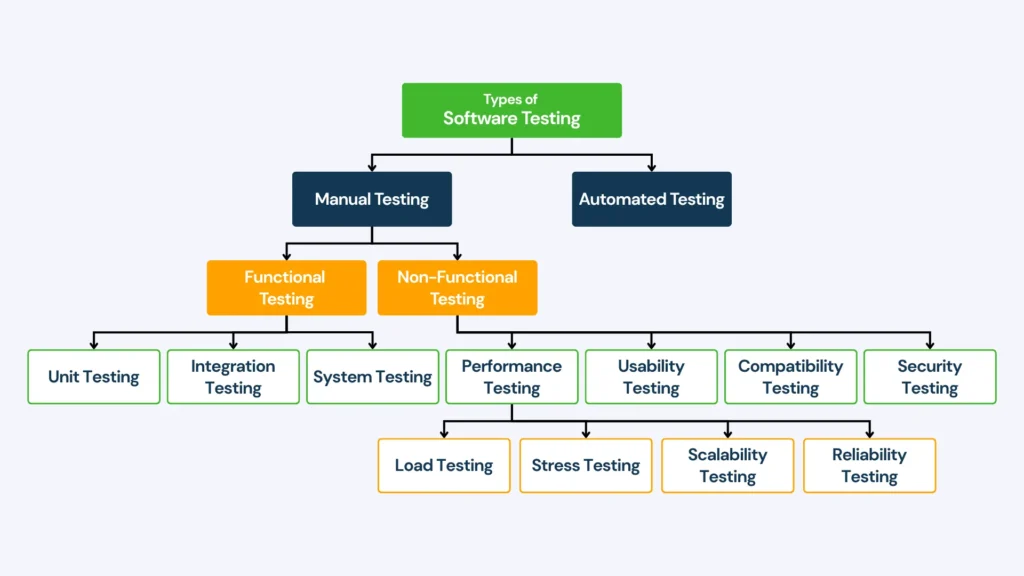
Functional Testing
Functional testing focuses on what the software is supposed to do. It checks the features and behaviors of the system based on the requirements or user needs. These tests are usually done by feeding input into the system and checking if the output is correct.
Common types of functional testing include:
- Unit Testing: Testing individual components or small pieces of code (usually done by developers).
- Integration Testing: Checking how different parts of the system work together.
- System Testing: Testing the complete system as a whole to ensure it meets the specified requirements.
Non-Functional Testing
Non-functional testing checks how well the software performs, rather than what it does. It looks at areas like speed, reliability, security, and how the system behaves under different conditions.
Common types of non-functional testing include:
- Performance Testing: Measuring how fast or responsive the software is under different loads.
- Load Testing: Checking how the system performs with a large number of users or data.
- Stress Testing: Testing how the system behaves under extreme conditions or beyond its limits.
- Scalability Testing: Verifying how well the software can scale up (or down) in terms of users, data, or transactions when system demands grow.
- Usability Testing: Evaluating how easy and user-friendly the software is.
- Security Testing: Identifying vulnerabilities and making sure the system protects data and access properly.
- Compatibility Testing: Ensuring the software works well on different devices, browsers, or operating systems.
- Reliability Testing: Checking if the software can perform consistently over time without crashing or failing.
Approach to software testing
There are two main approaches to carrying out software testing: manual testing and automated testing. Both have their own strengths and are often used together to get the best results depending on the type of project, time constraints, and available resources.
Manual Software Testing
Manual testing is when testers run the tests by hand without using any automation tools. They follow test cases, use the software as end-users would, and look for bugs, unexpected results, or anything that doesn’t work as it should.
Key points about manual testing:
- Useful for exploring new features, user interfaces, or areas that require human judgment.
- Ideal for usability testing, visual checks, and exploratory testing.
- Can be time-consuming and harder to repeat across multiple versions of the software.
- Helps uncover real-world issues that tools might miss.
Automated Software Testing
Automated testing uses scripts or tools to run tests automatically. It is often used for tasks that are repeated frequently, such as checking if existing features still work after code changes (regression testing).
Key points about automated testing:
- Saves time by running tests quickly and repeatedly.
- Good for large projects with many features that need frequent testing.
- Best suited for stable areas of the system where changes are less frequent.
- Requires initial effort to set up but pays off over time.
In many cases, a mix of both manual and automated testing gives the most effective results. Manual testing brings the human perspective, while automated testing provides speed and efficiency – especially for routine or large-scale test coverage.
Different levels of software testing
Software testing is not a one-time activity. It is done in different levels, each focusing on specific parts of the system as it is being built.
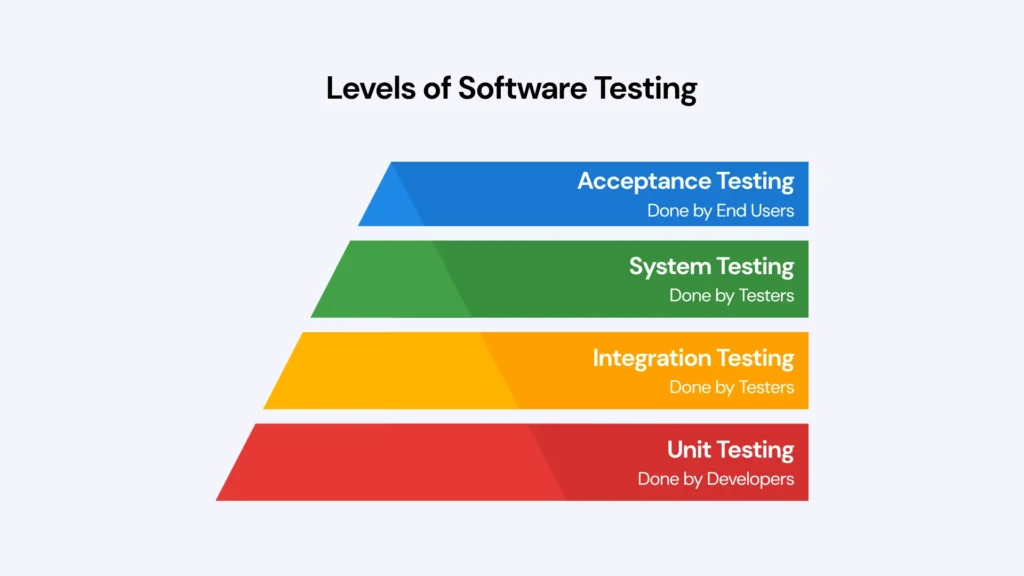
1. Unit Testing
Unit testing focuses on individual components or pieces of code, such as a function or a method. It is usually done by developers during development to check that each part works on its own.
- Find early coding mistakes
- Fast and easy to automate
- Done before other levels of testing
2. Integration Testing
Integration testing checks how different parts of the system work together. It helps make sure that components interact correctly after being combined.
- Can be done in phases (e.g. top-down or bottom-up)
- Detects issues in data flow or communication between components
- Follows unit testing
3. System Testing
System testing looks at the complete system as a whole to verify that it meets the specified requirements. This is where testers check all features and functions of the software in a test environment.
- Validates the full software solution
- Includes both functional and non-functional tests
- Performed by dedicated testers
4. Acceptance Testing
Acceptance testing is the final level and is done to check whether the software is ready for release. It is often carried out by the customer, end-users, or business stakeholders to see if it meets their needs.
- Confirms the software is usable and complete
- Focuses on real-world usage and business goals
- May include User Acceptance Testing (UAT)
Popular Software Testing Models
Software testing can follow different models that help teams plan and carry out testing more effectively. These models provide a structure for organizing testing activities, deciding what to test, and when to do it.
The V-Model
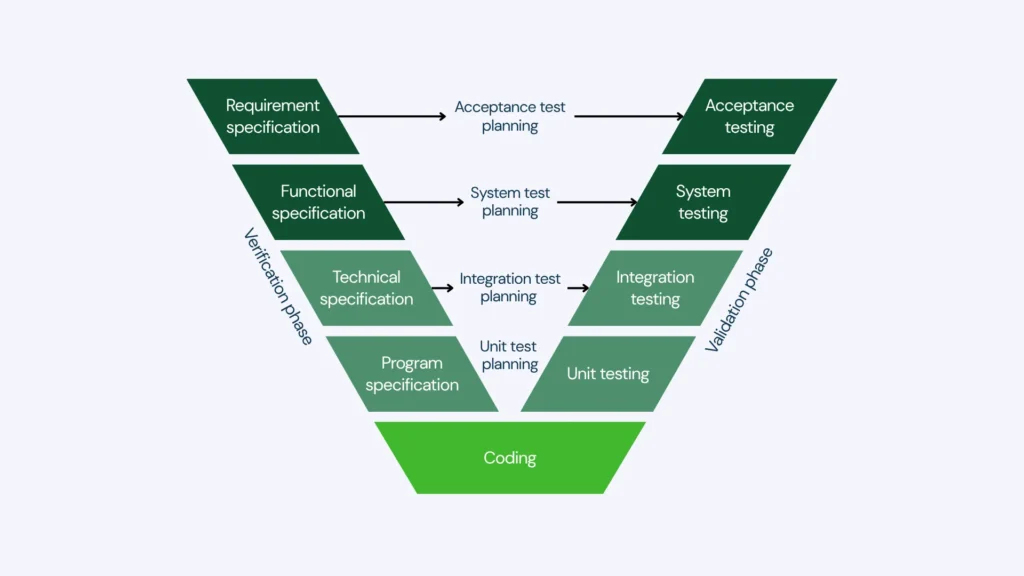
The V-Model (Validation and Verification Model) is an extension of the traditional waterfall model. It shows a clear relationship between development stages on the left side and testing activities on the right side, forming a “V” shape. Each development phase is matched with a corresponding test phase.
The Test Pyramid

The Test Pyramid is commonly used in Agile environments to guide the balance of different types of automated tests. It suggests having more low-level tests (like Unit tests) and fewer high-level ones (like UI tests).
The Honeycomb Model
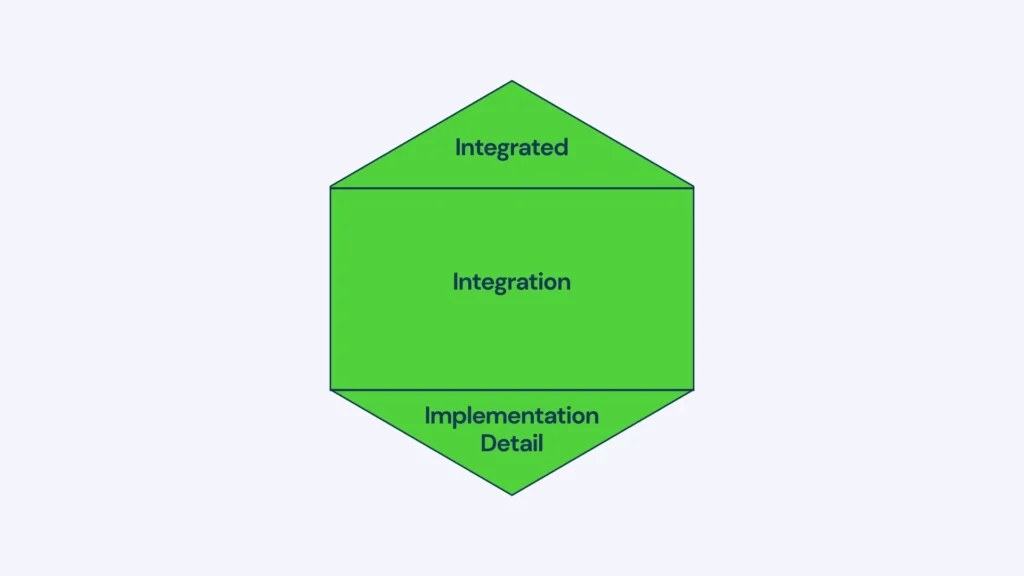
The Honeycomb Model is a modern approach to software testing that prioritizes integration testing, especially within API-driven and cloud-based systems. This model suggests allocating more resources to Integration tests, while reducing the emphasis on unit tests (focused on Implementation details) and UI tests (Integrated tests).
These models help teams choose the right testing strategy depending on their development style, goals, and product needs. In practice, teams often use a mix of these models to get the best results.
Why software testing is important
Software testing helps prevent small issues from becoming serious problems. A missed bug can lead to unexpected crashes, incorrect outputs, or poor user experiences. Testing makes sure the software is reliable before it reaches the real world.
Here’s why it matters:
- Catches issues early: Problems can occur at any stage – from unclear requirements to coding errors. Testing finds these before they cause bigger trouble.
- Prevents costly failures: Fixing bugs after release is more expensive and time-consuming than catching them early.
- Builds trust: Well-tested software gives users and stakeholders confidence that the product works as expected.
- Supports critical systems: In areas like finance, healthcare, or infrastructure, software failure can have serious consequences. Testing helps prevent that.
- Meets legal and business standards: Many industries require proper testing to comply with contracts, regulations, or quality standards.
Testing is not just about checking for bugs – it’s about making smart decisions, reducing risk, and releasing better software.
Software testing best practices
Here are some key best practices to follow in software testing:
- Start Testing Early: Testing should begin as early as possible in the development process. Reviewing requirements, planning tests, and identifying potential issues before coding starts helps reduce costly defects later.
- Understand Requirements Clearly: Clear understanding of what the software is supposed to do is essential.
- Use a Mix of Testing Types: Combine different testing types – such as functional, non-functional, manual, and automated – to get a complete view of the system’s quality.
- Keep Test Cases Clear and Reusable: Well-written test cases are easy to understand, repeatable, and maintainable. They should focus on a specific goal and be updated when requirements or features change.
- Automate Where It Makes Sense: Automation is great for repetitive and high-volume testing, such as regression tests. However, not everything should be automated – exploratory tests, usability checks, and tests that require human judgment are often best done manually.
- Prioritize Testing Based on Risk: Test the most critical and high-risk areas first. Focus on features that are used often, connected to core business needs, or likely to fail.
- Maintain a Clear Defect Reporting Process: When defects are found, report them clearly with steps to reproduce, screenshots or logs if possible, and details about the environment.
- Collaborate with the Whole Team: Testing works best when testers, developers, and business stakeholders work together. Sharing knowledge and feedback helps prevent misunderstandings and builds a stronger product.
- Review and Improve Continuously: Regularly look back at what went well and what could be improved in the testing process.
Final Thoughts
Software testing might not sound like the most exciting part of development – but it’s the safety net every good team needs. It helps us ship better products, avoid costly surprises, and, most importantly, keeps users happy (and support teams sane).
The cool part? You don’t need to test everything everywhere all at once. With the right approach, a mix of testing types, and a few good habits, you can build confidence in your software without losing sleep over every possible bug.
So the next time someone says “It worked on my machine,” just smile and show them your test results.


